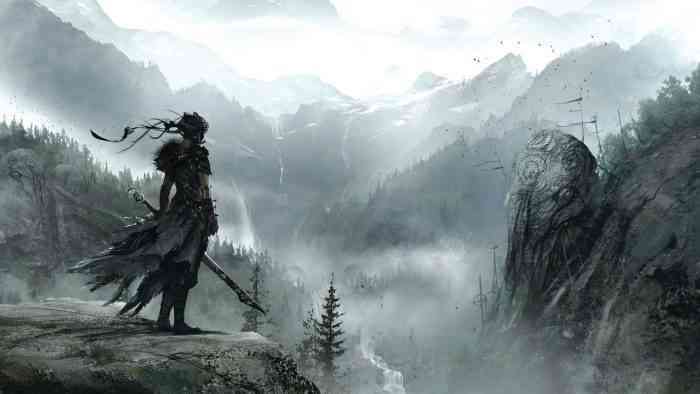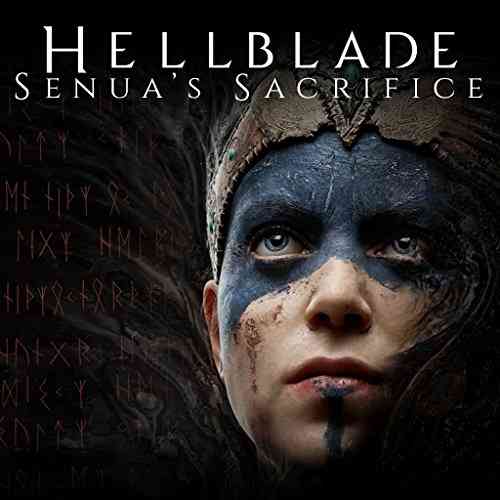Hellblade: Senua’s Sacrifice Review
After Enslaved: Odyssey to the West and 2013’s Devil May Cry, developer Ninja Theory has taken a more intimate route by deciding to self-publish their new, ‘AAA’, third-person action game. I say ‘AAA’ because Ninja Theory has found a way to emulate the production value of those types of games while still being able to slash the price in half. It’s a huge step and the developer should be commended for all its work in the past few years trying to get other studios on board to make these types of high production value, low-cost games. But that’s not Hellblade’s biggest influence. It’s a serious story that focuses on a realistic manifestation of mental disorder, psychosis. It is an important step for gaming to take, as an interactive medium, if it wants to mature to the level of novels and film in terms of subject material.
Don’t let the game’s low price trick you though because Hellblade is a high production title. The story of Senua’s Sacrifice will take the player through mythological Norse and Celtic worlds as they travel to their interpretation of Hell. Beautiful kaleidoscopes alter the saturation and hue of the colors in the world. The brilliant animations look straight out of a Naughty Dog game. The deep combat system can be seen as simplistic to those that don’t get the most out of it. Hellblade’s close camera angle while in combat makes for an intimate experience as the player fights droves of demons from the underworld.
__________________________
“Hellblade’s close camera angle while in combat makes for an intimate experience as the player fights droves of demons from the underworld.”
While simple in nature – as the player can only block, dodge, and execute three attack types – the true depth of the combat system is revealed a few hours in as more enemies of different types appear in the arena to take down Senua. There’s an undeniably cinematic quality to the fights, with the camera angles and the swelling sounds making each battle feel apocalyptic. Senua can sprint towards the demons and land a critical heavy attack, but the player must watch out for the position of other enemies relative to the play space. While attacking one demon, another of a different type can immediately come at you from behind and interrupt a critical blow you were about to land.

This makes Hellblade’s combat system feel like a tactical waiting game as I found myself surveying the landscape and trying to get enemies backed into a corner alone without the help of their comrades. This style of intimate, hard fought combat plays well within the context of the game. Senua’s mental disorder manifests in almost every mechanic as voices she hears help her to recognize any threats that may be lurking from behind her with a verbal warning. The puzzle mechanic is entirely linked to her disorder as players are tasked to find hidden meanings within the game world in the form of symbols. Line them up with the game’s geometry to reveal these hidden symbols and move forward. My only issue here is that these puzzles started to become a little repetitive during the last third of the game. I would have liked to see the same evolution that the combat underwent when it comes to these puzzles.
Though the context in which these mechanical actions take place is much more ambitious as the player is told a dark story about a girl on a mission to save a soul. While there were parts of the narrative that left me confused, Senua’s haunting journey wraps up in a way that I didn’t expect and the developers should be applauded for telling a realistic story in a fantasy world. The game isn’t afraid to feature a lot of cut-scenes and it’s all the better for it. The cinematography is world-class as swooping movements of the camera illustrate the horror Senua is facing or take her to new environments with a clever fade transition in and out of the black that surrounds the screen.
__________________________
“Ninja Theory has delivered a game that is equally good and important for the industry in terms of serious storytelling and the ability to create AAA experiences at a low cost.”
Hellblade’s rewarding combat system and its larger story that deals with mental health in a significant way make for a great cinematic journey that isn’t afraid to embrace its linearity. While I would have liked to see the same kind of ambition in the puzzle design, Senua’s Sacrifice is a worthy addition alongside the likes of the severely underrated Enslaved: Odyssey to the West. Ninja Theory has delivered a game that is equally good and important for the industry in terms of serious storytelling and the ability to create AAA experiences at a low cost.
*** Hellblade was reviewed on the PS4 ***
The Good
- Simple and deep combat system
- Enthralling story
- Gorgeous landscapes
The Bad
- Repetitive puzzles

